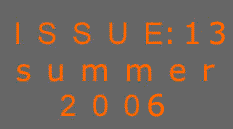 |
 |
Issue No.13 Summer
|
| ENS News |
| ENS Events |
| Member Societies & Corporate Members |
| Petten research reactor converts to using low-enriched fuel Neutron Kinetics of the Chernobyl Accident Nuclear Option in Countries with Small and Medium Electricity Grids |
YGN Report |
| European Institutions |
| MEP Forum discusses economics of nuclear energy |
| ENS World News |
ENS Members |
| Links to ENS Member
Societies Links to ENS Corporate Members Editorial staff ______________________ |
| _____________________ |
 TopSeal 2006 17.9. - 20.9.2006 Olkiluoto, Finland |
| _____________________ |
 TopFuel 2006 22 - 26 October 2006 in Salamanca |
| _____________________ |
| _____________________ |
|
|
 |
On the 6th of May, NRG (the Netherlands’ national nuclear research centre in Petten) started up its High Flux Reactor (HFR) for the very first time, with a core that consisted solely of low-enriched nuclear fuel. The conversion from high-enriched to low-enriched uranium was the result of a technical development programme that lasted several years and required the finalising of new licensing procedures and switching over to using a different type of nuclear fuel. Thanks to the efforts of the many employees involved, the conversion process went smoothly. One objective was to avoid any disruption to Petten’s isotope production and other ongoing research programmes. With this conversion, Petten will offer an important contribution to the |
global effort of diminishing the use of proliferation-sensitive high-enriched uranium (HEU).
In order to make U-235 suitable for use in nuclear power plants, the 235U content needs to be enriched. For nuclear power plants, the enrichment percentage of 235U is normally approximately 4%. Until recently, the HFR used HEU containing 235U of 89–93%. This high enrichment makes the HEU proliferation-sensitive, meaning that the fuel, which the HFR used to use until recently for civil purposes is also suitable for nuclear weapons. In order to prevent even the remotest possibility of certain countries or groups from obtaining this HEU to make nuclear weapons, NRG decided to switch to using low-enriched uranium (LEU), in which the amount of fissionable 235U is less than 20%. The Joint Research Centre (JRC), a European Commission Directorate General and formerly the HFR’s licensee, made a concerted effort, together with NRG (the HFR’s operator/user), to convert from HEU to LEU. This has now been achieved.
The JRC/NRG conversion project was planned in three phases: a feasibility study, the technical qualification of the conversion process and the licensing procedures.
The initial phase resulted in the formulation of detailed calculation models so that the reactor core could be optimised. The substantial percentage increase of the ‘non-active’ 238U decreases the thermal flux of neutrons and the core optimization made it possible to keep the reduction of the thermal neutron flux to a minimum. By adapting the calculation model in this way, the fission material can be optimized - by changing its density – in order to compensate for the lower degree of enrichment.
During phase two, the conversion was granted technical qualification following a comprehensive professional study, the carrying out of safety analyses, the testing the new nuclear fuel elements and the carrying out of thermal and hydraulic calculations.
Phase three focused on the licensing procedure. JRC is the HFR’s owner but was also the licensee. Quite apart from the decision to switch from HEU to LEU, the license was in any case due for renewal. Since it was more logical that NRG, as the reactor’s operator and user, should also become its licensee, these outstanding issues were easily resolved by obtaining the new license in NRG’s name. This license transfer had already been recommended by the IAEA. When the license application was made the conversion process was included in the application request, so that when the authorities granted the license, in February 2005, the targeted conversion became a reality, at least in writing.

Last October, the first LEU elements were placed in the reactor’s core. Now, for the first time, the HFR starts up using only LEU elements. Consequently, NRG and JRC are actively contributing towards reducing the use of proliferation-sensitive materials.
For more information about this development and about the other activities of NRG and the JRC in Petten visit the following web site: www.nrg-nl.com
| |

